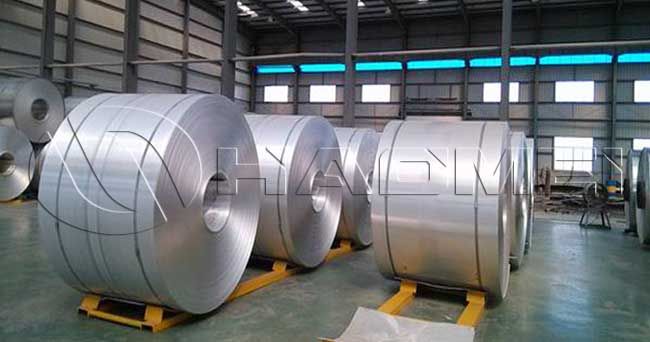Automotive aluminum alloys have low density and good formability. Compared with traditional steel parts, the lightweight effect can reach more than 30%. However, the cost of aluminum alloy materials is high, which is not suitable for low-end models.
The use of aluminum alloys in the body-in-white and the cover parts can effectively reduce the weight of the whole vehicle, so as to achieve the goal of energy saving, emission reduction, and optimizing the performance of the whole vehicle. The body of the all-aluminum car is mainly composed of extruded profiles and aluminum plate.
Aluminum alloys for car body are mainly 2xxx, 5xxx, 6xxx and 7xxx alloys. Except for 5xxx aluminum alloys, the strength of the other three aluminum alloys is further improved during coating and baking.
The automobile anti-collision beam is an important device for absorbing and mitigating the external impact force and protecting the safety of the body and passengers. Extrusion is a typical method of manufacturing the anti-collision beam. 6063, 7021, 7029,etc are usually used.
The wheel is an important part of the vehicle. In addition to the positive pressure, it also bears the interaction of the torque when the vehicle starts and brakes, as well as the irregular force from all directions such as turning and impact during driving.
5xxx aluminum alloy is the most commonly used deformed aluminum alloy in wheel forging, mainly including: 5052-O, 5154-O, 5454-O, 5083-O, 5086-O,etc. 5xxx forged aluminum alloy wheels have high corrosion resistance and are suitable for manufacturing wheels that work in extreme environments. Another commonly used aluminum alloy in wheel manufacturing is 6061 t6 aluminum. The Mg2Si strengthening phase formed by Mg and Si elements can significantly improve its mechanical properties.
Haomei Aluminum has rich automotive aluminum alloys, mainly 5xxx and 6xxx car aluminum. Welcome to leave message below to inquire what you.
Original Source:https://www.autoaluminumsheet.com/a/what-are-automotive-aluminum-alloys.html



